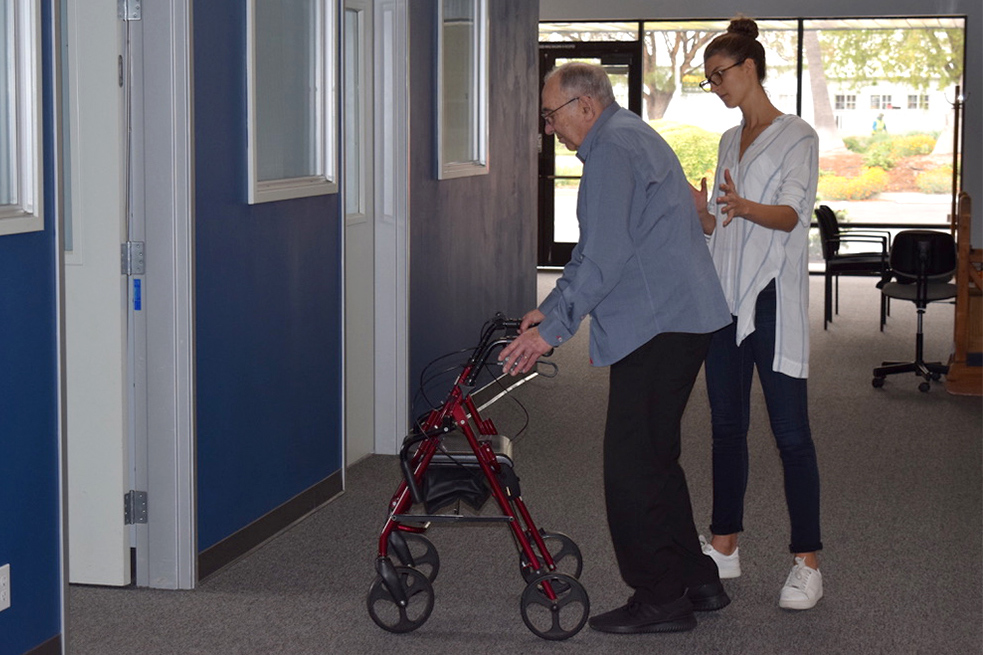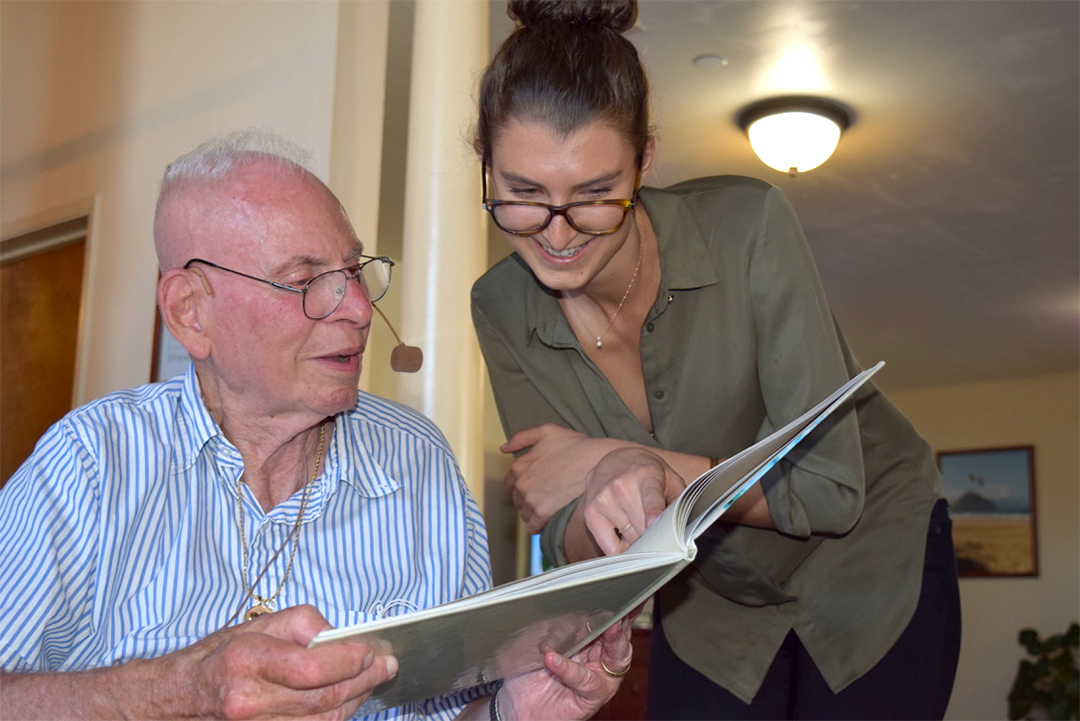Eighty-seven-year-old Jack Brill has Parkinson’s disease, which had taken away his ability to walk. Sidney Collin — founder of a medical device company De Oro Devices and a biomedical engineering alumnus — is fixing that.
“It changed my life, [and] it has been a tremendous help,” Jack Brill said about the little black box he attached to his walker thanks to Collin.
De Oro Devices has produced a device called “Gaitway,” the small box that offers a solution to freezing of gait. Gait is one of the motor characteristics most affected by Parkinson’s, exhibited when the brain is unable to send signals to the legs. It can make a person feel like they are unable to pick up their feet and can make their knees shake, as if their feet were stuck in cement.
“There are no words that I can say to describe to you what it was like to see Jack use this for the first time,” Collin said.
How it works
Collin’s device attaches to a cain or walker and helps with freezing of gait by producing certain sensory cues that change the intention of the brain. The device projects a green laser line in front of the user. This allows the brain to send signals to the legs because the intention has gone from “step forward” to “step over the line.”
The device also houses a speaker with a metronome. The metronome’s consistent beat has been proven to help those with trouble walking. It compliments the laser and gives the user a beat to walk to. Orlando Severo, one of the people who tested the device this last weekend, described Gaitway as nothing less than a miracle.
“The metronome is a beat, it helps me in the corners and the laser on the straight away,” Severo said.

Feedback from support groups has been a key part of developing the device and changing little things like laser color. The laser used to be red but after further analysis, it was changed to green simply because of social norms and understandings that “red means stop,” and “green means go.”
This last weekend, people were able to take the device home, and before the weekend was over, everyone responded positively. One person responded explaining he was able to walk into Mass for the first time this year.
“That is why I’m doing this,” Collin said. “That’s the reason I’m getting this out, because people need it.”
Contrary to similar devices, Gaitway is light and has the ability to attach to any cain or walker. Other devices display similar sensory cues, but are usually heavy and built into a walker.
The need
In the United States, roughly one million people are predicted to have Parkinson’s disease by 2020 (and 10 million worldwide), according to the Parkinson’s Foundation.
De Oro Devices plans to expand their team, and are currently attempting to hire a Cal Poly student. They plan on launching their first 200 devices in September. Their second run will be in December, where they will launch 500 devices to individual buyers. Next year, they project selling about 6,000 to 7,000 Gaitway devices.
“No numbers that I can put on a slide are going to convince you how much people need this,” Collin said. “It’s the interactions we have with people. De Oro Devices is redefining the limits of Parkinson’s disease, and the company’s goal is to get this product out to help as many people with Parkinson’s disease as they can.”
Camila Gonzalez, Megan Day and Summer Santangelo contributed to this story.

